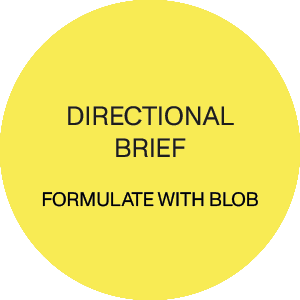Directional brief is a concise and clear document that provides specific guidance and instructions, allowing recipients to easily understand and act upon the information provided.
It outlines the key objectives, expectations and desired outcomes, enabling individuals or teams to navigate the task or project effectively.
Directional brief serves as a roadmap, ensuring that all stakeholders are on the same page and can execute their responsibilities with clarity and purpose.
Personalized Progress Disclaimer. Embarking on a journey to enhance your professional presence can feel like a significant undertaking. We want to assure you that our approach is tailored to your pace, ensuring a smooth and comfortable experience. Our collaborative process begins with an exploration of your goals, and together, we navigate the learning curve at a speed that suits you. Your progress is the compass, and we are here to guide you, ensuring a relaxed and uplifting journey. You can trust that every step is orchestrated to align with your comfort, ensuring a positive and manageable path towards achieving your business aspirations.

By engaging in these steps, we can help someone formulate a comprehensive and effective directional brief that serves as a valuable guide for the successful execution of the project:
- Define Project Objectives: working collaboratively with the individual or a team to clearly define the objectives and goals of the project: What are the desired outcomes? What problems or challenges is the project aiming to address?
- Identify Target Audience: determining the target audience or stakeholders for the project. Understanding the audience helps tailor the project to meet their needs and expectations
- Scope of Work: clearly outlining the scope of work for the project: What tasks need to be accomplished? What are the specific deliverables?
- Budget and Resources: discussing and defining the budget and resources available for the project. This includes financial resources, time constraints and any other relevant constraints
- Timeline and Milestones: developing a realistic timeline for the project, including key milestones and deadlines. This helps in setting expectations and ensuring the project stays on track.
- Collaborative Workshops or Sessions: facilitating collaborative workshops or sessions with key stakeholders to gather input, insights and ideas. This helps in ensuring that the directional brief reflects a collective vision
- Risk Assessment: identifying potential risks and challenges that may arise during the project. Discussing strategies for mitigating these risks and addressing unforeseen issues
- Brand Guidelines and Alignment: if applicable, ensuring that the project aligns with the organization’s brand guidelines and overall strategic direction
- Creative Direction and Aesthetics: providing guidance on the creative direction and aesthetics of the project. This includes visual elements, design considerations and overall aesthetics
- Key Messages: defining the key messages that the project should convey: What information is crucial for the audience to understand?
- Communication Channels: determining the communication channels for the project: How will the project be communicated to the target audience? This may include digital platforms, traditional media or internal communication channels
- Measurement and Evaluation: establishing metrics for measuring the success of the project: What are the key performance indicators (KPIs)? How will success be evaluated?
- Legal and Compliance Considerations: ensuring that the project complies with legal requirements and industry regulations. This may include copyright considerations, privacy concerns or other legal aspects
- Stakeholder Engagement: developing a plan for stakeholder engagement throughout the project. This involves keeping key stakeholders informed and involved in decision-making processes.
- Document Approval Process: defining the process for document approval and sign-off. This ensures that all key stakeholders have reviewed and agreed upon the directional brief
- Feedback and Iteration: encouraging an iterative process by seeking feedback from stakeholders. This allows for refinements and improvements to the directional brief

Pricing. Our pricing structure is designed with modularity in mind, ensuring that you only pay for the services you require, allowing for flexibility and customization. For each task you may decide to delegate to us there is a prewritten full-service list. This list consists of basic must do services, extent of available optional added services and suggestion of optional added third party services. During our task related Initial Chat, in a direct conversation with the client, we choose a customized list of services as per clients’ needs and circumstances. To accommodate different difficulty levels, we introduce an index for difficulty. The basic price is multiplied by this index to calculate the price for a task at any difficulty level, ensuring a fair and flexible pricing model that accurately reflects the complexity of the services provided. The level is argumented and agreed upon during the task related Initial Chat. With these inputs we then prepare and deliver to client our exact offer. For client’s information and potential budget range idea we have provided, for each task, a task price list as .pdf file with relevant details disclosed.

